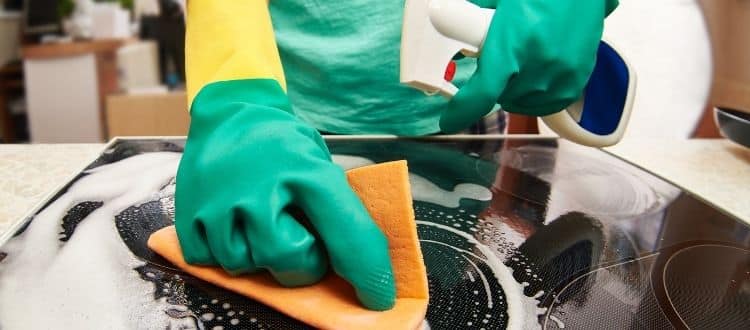Cleaning Versus Disinfecting
In today’s world, maintaining a clean and hygienic environment is more important than ever. With the ongoing threat of infectious diseases and illnesses, it’s essential to understand the difference between cleaning and disinfecting, and how each plays a crucial role in preventing the spread of germs and bacteria. In this blog, we’ll explore the distinctions between cleaning and disinfecting, different types of cleaning and disinfecting services, their respective benefits, and why both are necessary for maintaining a healthy and safe environment.
Understanding Cleaning
Cleaning is the process of removing dirt, dust, debris, and other impurities from surfaces using water, soap, detergents, and mechanical action (such as scrubbing or wiping). While cleaning may not necessarily kill germs or bacteria, it helps reduce their numbers and removes organic matter that can harbor pathogens.
The primary goal of cleaning is to visually and physically remove dirt and grime, making surfaces appear clean and tidy. Common cleaning tasks include sweeping, vacuuming, mopping, dusting, and wiping down surfaces with a cleaning solution. While cleaning is essential for maintaining cleanliness and hygiene, it may not be sufficient for eliminating harmful pathogens that can cause illness.
PRO TIP: Discover specialized services like wood floor cleaning, junk removal, power washing, and tile cleaning, provided by Cleaning World Inc. Visit our official website to delve into these offerings. Your satisfaction is our main concern, and we’re eager to deliver top-notch service to you.
Understanding Disinfecting
Disinfecting, on the other hand, is the process of using chemical agents to kill or inactivate germs, bacteria, viruses, fungi, and other microorganisms on surfaces. Unlike cleaning, which focuses on removing dirt and debris, disinfecting targets harmful pathogens to reduce the risk of infection and disease transmission.
Disinfectants work by disrupting the cell membranes of microorganisms, preventing them from functioning properly and causing them to die or become inactive. Common disinfectants include bleach, hydrogen peroxide, alcohol-based solutions, and quaternary ammonium compounds. It’s important to follow the manufacturer’s instructions for proper dilution, application, and contact time when using disinfectants to ensure effective germ-killing action or better yet, hire professionals.
Types of Cleaning
Cleaning and disinfecting are essential practices for maintaining a clean, hygienic, and safe environment. While both are aimed at reducing the risk of infection and disease transmission, they serve distinct purposes and involve different methods and products. In this section, we’ll explore the different types of cleaning and disinfecting, their respective benefits, and when each is necessary for maintaining a healthy indoor environment.
Routine Cleaning
Routine cleaning, also known as maintenance cleaning, is the regular removal of dirt, dust, debris, and other surface contaminants to maintain cleanliness and hygiene. It involves basic cleaning tasks such as sweeping, vacuuming, mopping, and dusting to keep surfaces clean and presentable.
Routine cleaning is essential for preventing the buildup of dirt and grime, reducing the risk of microbial growth, and maintaining a visually appealing environment. It’s typically performed on a daily or weekly basis, depending on the level of foot traffic and activity in the space.
Deep Cleaning
Deep cleaning, also known as thorough cleaning or spring cleaning, involves more intensive cleaning tasks that target hard-to-reach areas and hidden surfaces. It goes beyond routine cleaning to remove embedded dirt, stains, and buildup that may accumulate over time.
Deep cleaning tasks may include scrubbing grout lines, cleaning behind appliances and furniture, washing curtains and upholstery, and sanitizing high-touch surfaces. Deep cleaning is typically performed less frequently than routine cleaning and is recommended on a quarterly or semi-annual basis, depending on the specific needs of the environment.
Specialized Cleaning
Specialized cleaning refers to cleaning tasks that require specific techniques, equipment, or products to address unique challenges or surfaces. Examples of specialized cleaning include carpet cleaning, upholstery cleaning, window cleaning, and floor refinishing.
Specialized cleaning services are often performed by trained professionals who have the expertise and equipment to tackle complex cleaning tasks safely and effectively. These services may be scheduled as needed or as part of a regular maintenance plan to keep surfaces clean, fresh, and well-maintained.
Types of Disinfecting
There are several types of disinfecting. Keep reading to learn more.
General Disinfection
General disinfection involves the use of chemical agents to kill or inactivate a broad spectrum of germs, bacteria, viruses, and fungi on surfaces. It targets common pathogens that may be present in the environment and helps reduce the risk of infection and disease transmission.
General disinfectants are typically used on non-porous surfaces such as countertops, doorknobs, light switches, and electronic devices. They are available in various forms, including sprays, wipes, and liquid solutions, and should be applied according to the manufacturer’s instructions for proper dilution, application, and contact time.
High-Level Disinfection
High-level disinfection is a more rigorous disinfection process that targets specific pathogens or healthcare-associated infections (HAIs) that may pose a higher risk to human health. It involves using specialized disinfectants and techniques to achieve a higher level of microbial reduction on surfaces.
High-level disinfection is commonly used in healthcare settings, laboratories, and other high-risk environments where strict infection control measures are required. It may involve the use of advanced disinfection technologies such as ultraviolet (UV) light, ozone gas, or hydrogen peroxide vapor to achieve optimal results.

Terminal Disinfection
Terminal disinfection, also known as terminal cleaning, is the final step in the disinfection process and involves thoroughly cleaning and disinfecting a space after it has been occupied by a patient or individual with a contagious illness. It aims to remove any remaining pathogens and prevent the spread of infection to others.
Terminal disinfection may involve using a combination of cleaning and disinfection methods, including surface wiping, fogging, and air disinfection. It’s typically performed in healthcare settings, long-term care facilities, and other environments where infection control is critical to protecting vulnerable populations.
The Importance of Cleaning and Disinfecting
While cleaning and disinfecting are often used interchangeably, they serve distinct purposes and play complementary roles in maintaining a clean and hygienic environment. Here are some key reasons why both cleaning and disinfecting are essential:
Removal of Dirt and Debris
Cleaning helps remove dirt, dust, food particles, and other organic matter from surfaces, preventing the buildup of grime and reducing the potential for microbial growth. By eliminating sources of contamination, cleaning creates a cleaner and more sanitary environment for occupants.
Reduction of Germs and Bacteria
Disinfecting targets harmful pathogens, such as bacteria, viruses, and fungi, that may be present on surfaces. By killing or inactivating these microorganisms, disinfecting helps reduce the risk of infection and disease transmission, especially in high-touch areas such as kitchens, bathrooms, and healthcare facilities.
Prevention of Illness
Regular cleaning and disinfecting help prevent the spread of infectious diseases and illnesses by removing or killing germs and bacteria that can cause illness. By maintaining a clean and hygienic environment, you can protect yourself, your family, and others from common illnesses such as colds, flu, and stomach bugs.
Maintenance of Indoor Air Quality
Cleaning and disinfecting can also improve indoor air quality by removing allergens, pollutants, and microbial contaminants from surfaces. By reducing the buildup of dust, mold, and other allergens, cleaning and disinfecting help create a healthier indoor environment for occupants, especially those with respiratory conditions or allergies.
Compliance with Health and Safety Regulations
In certain settings, such as healthcare facilities, food service establishments, and schools, cleaning and disinfecting may be required to comply with health and safety regulations and guidelines. By implementing regular cleaning and disinfection protocols, you can ensure compliance with regulatory requirements and maintain a safe and sanitary environment for employees, customers, and visitors.
Best Practices for Cleaning and Disinfecting
To effectively clean and disinfect your environment, it’s important to follow the best practices and guidelines recommended by health authorities and cleaning professionals. Here are some tips for effective cleaning and disinfecting:
Choose the Right Products
Select appropriate cleaning and disinfecting products based on the surfaces you’re cleaning and the pathogens you’re targeting. Read product labels carefully and follow the manufacturer’s instructions for proper dilution, application, and contact time.
Focus on High-Touch Areas
Pay special attention to high-touch surfaces and objects, such as doorknobs, light switches, countertops, faucets, and electronic devices. These areas are prone to contamination and should be cleaned and disinfected regularly to reduce the risk of germ transmission.
Clean Before Disinfecting
Before disinfecting surfaces, it’s essential to clean them thoroughly to remove dirt, debris, and organic matter. Cleaning helps prepare the surface for disinfection and improves the effectiveness of the disinfectant.
Use Proper Techniques
Follow proper cleaning and disinfecting techniques, such as wiping surfaces with a clean cloth or mop, using a back-and-forth motion, and allowing disinfectants to air dry for the recommended contact time. Avoid cross-contamination by using separate cleaning tools and solutions for different areas.
Maintain Consistent Cleaning Protocols
Establish regular cleaning and disinfection protocols to ensure that surfaces are cleaned and disinfected on a routine basis. Develop a cleaning schedule and assign responsibilities to ensure that all areas are covered and maintained according to the established protocols.
PRO TIP: Cleaning World Inc: Enhance efficiency by bundling services, including heavy-duty house cleaning, flood cleanup, cleanouts service, and our services. Visit us at 209 Holt St, Hackensack, NJ 07601.
Cleaning Versus Disinfecting
Cleaning and disinfecting are essential practices for maintaining a clean, hygienic, and safe environment. While cleaning helps remove dirt and debris from surfaces, disinfecting targets harmful pathogens to reduce the risk of infection and disease transmission. Both cleaning and disinfecting play complementary roles in promoting health and wellness, especially in high-traffic areas and settings where hygiene is paramount.
By understanding the differences between cleaning and disinfecting and following best practices for each, you can create a healthier indoor environment for yourself, your family, and others. Whether you’re at home, at work, or in public spaces, implementing regular cleaning and disinfection protocols is crucial for preventing the spread of germs and maintaining a healthy environment for everyone. For your big (or small) cleaning needs, contact Cleaning World today!





